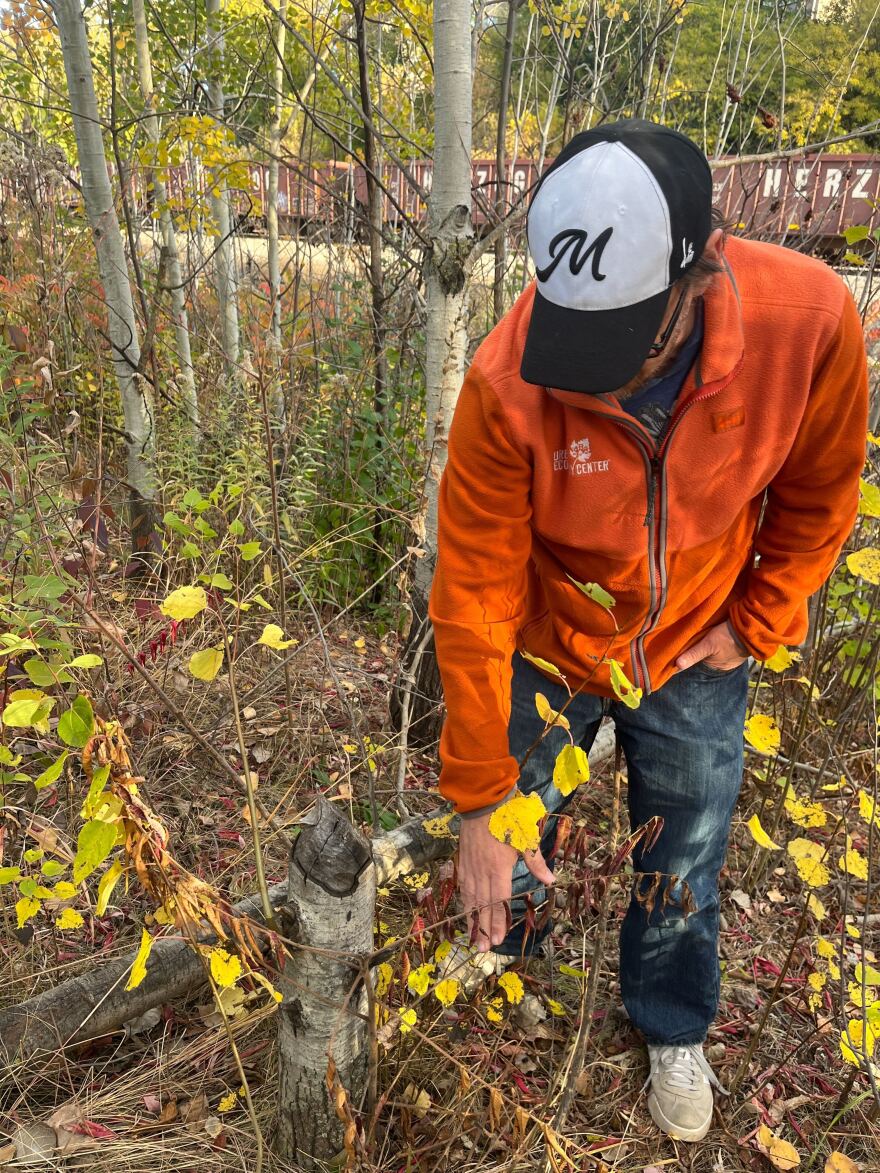In the last decade, beavers have reemerged in the Milwaukee and Menomonee rivers. The large rodent was extinct locally for centuries due to hunting, urbanization and pollution.
The beavers’ trouble goes back to Milwaukee’s fur trade. Traders trapped beavers and sold their pelts. It caused beaver populations to plummet in the city, and they were considered locally extinct by about 1730.
That brings us to the present day. Milwaukee resident Elisabeth Witt was on a hike with her son in Hubbard Park, when she spotted something unexpected on the Milwaukee River.
“I saw this beaver just like floating along on the ice and getting in sticks and eating them, and I'm just wondering like where is he living? What is he doing?” says Witt.
After the sighting, she wanted to learn more about the local rodents, so she turned to Bubbler Talk.

In our search for answers about the lives urban beavers, we met with Tim Vargo, director of research for the Urban Ecology Center in Mitchell Park.
“I'm not sure if we have an estimate of population numbers. We see them on a regular basis. They're here, they're breeding, and they have their lodges, and so it's a fun time,” says Vargo.
Around 2013, beavers were reintroduced in the Milwaukee area. Restoration efforts improved water quality and built back some of the lost woods suitable for beaver lodges. Conservationist groups such as the Urban Ecology Center, Milwaukee Riverkeeper, and Superior Bio-conservancy have been studying and aiding the beavers' return.
Where do beavers live?
Beavers spend most of their lives in and around water. Witt notes she's never seen a traditional beaver dam in Milwaukee.
Vargo says humans took much of the prized wetland habitat that would usually be prime real estate for beavers, and the Milwaukee and Menomonee Rivers, which go through the city, are too large for a beaver to build a dam.
“It's not these above-ground lodges that you're probably used to seeing," says Vargo. "They're inside the riverbanks, they dig in."
The animals will burrow into the sides of the river to create a den with an underwater entrance to protect them from predators.
Vargo says beavers create tight-knit families, with a single family living together in a lodge made of branches, sticks, and mud.
“For the most part, they're monogamous and they're going to be in their family groups. So, the kits will stick around for a couple years and kind of help around the family. So you can imagine, you know, that a family of beavers will be working in an area for a while and then the young will disperse. But you can have generations living in the same lodge,” says Vargo.
The beaver work ethic
Often, when people spot a beaver, they’ll see just one. While they do enjoy solo work, it isn’t unusual to have a small crew of the rodents working together to harvest large trees and dragging them back to the water.
Being in a city means the rodents don’t need as much protection from predators, just human interference. But their own work as natural lumberjacks leaves them vulnerable.

Vargo describes the large cottonwood, birch and aspen trees surrounding much of Milwaukee's rivers as a "candy shop" for the beaver population.
“It's dangerous — just like with humans. It's a pretty dangerous job to chop down trees and you can get severely injured or die. It's the same with beavers...They could get seriously injured or die. So, it's dangerous for them too. They’re trying to stay safe, they're out doing this at night,” says Vargo.
The rodents weigh around 70 to 80 pounds and can haul lumber long distances to get the resources they need to survive.
We walked down the trail in Three Bridges Park looking for evidence of beaver activity. We stepped off to the right of the trail, heading toward the train tracks, where we found an aspen that had been cut down by a beaver.

“It's not near the river, so in addition to cutting this down, it had to drag the tree all the way over to the water," says Vargo. "So, you can imagine...how big this tree is. So the muscles — the incredible strength it took first to bite through this tree, and then to drag it over to the river."
In order to get the job done, they rely on their jaw strength and sharp teeth to chomp through the wood. When looking closely at the teeth of a beaver, they appear to be long, curved and orangey.
“You see that beavers have red teeth, and for us that would maybe indicate tooth decay, but for them it's like the opposite," says Vargo. "It's the opposite because the redness comes from, basically, iron. So they have essentially metal in their teeth to keep it strong, because they are going to bite trees, they're going to bite wood."

The return of beavers and other wildlife
Vargo notes that the rehabilitation of natural and wild spaces in Milwaukee has led more animals — beyond beavers — to return home.
“It kind of parallels the return of otters to the area too," he says. "So the beaver sighting started with one, and then a couple of years later another one, and then they started becoming regularly, and that's what's happening now with otters. So we have otters downtown — sightings sporadically, and we're hoping that their path is similar to the beavers.
There used to be an estimated 400 million beavers in the United States. While we might not see those numbers again, we can root for the small population living in Milwaukee's rivers to thrive.
_








